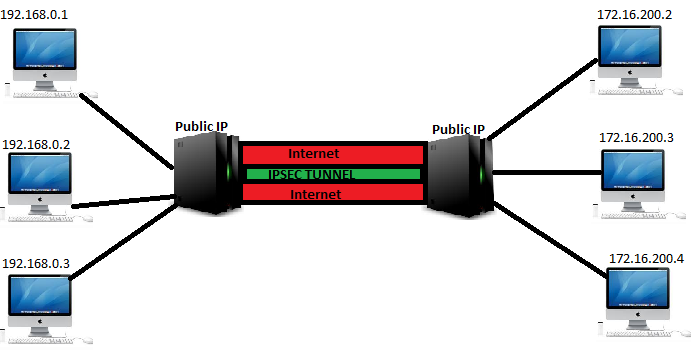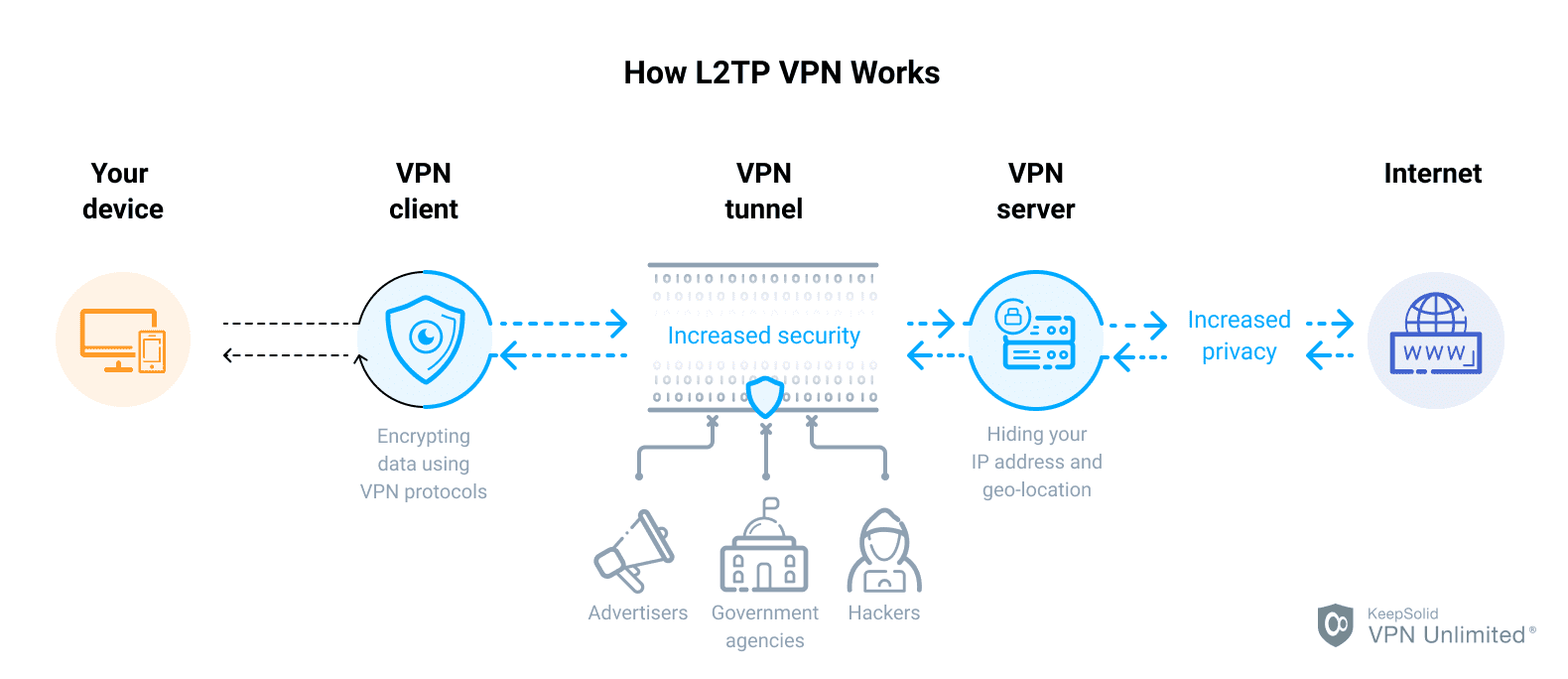Featured
Table of Contents
- Overview Of Ipsec -
IPsec verifies and encrypts information packages sent out over both IPv4- and IPv6-based networks. IPsec protocol headers are discovered in the IP header of a package and define how the information in a packet is handled, including its routing and delivery across a network. IPsec includes several parts to the IP header, consisting of security details and one or more cryptographic algorithms.

ISAKMP is defined as part of the IKE protocol and RFC 7296. It is a framework for key facility, authentication and negotiation of an SA for a safe and secure exchange of packets at the IP layer. Simply put, ISAKMP defines the security specifications for how 2 systems, or hosts, communicate with each other.
They are as follows: The IPsec procedure starts when a host system acknowledges that a package needs defense and needs to be transmitted using IPsec policies. Such packets are thought about "fascinating traffic" for IPsec functions, and they activate the security policies. For outgoing packets, this suggests the appropriate encryption and authentication are applied.
What Is Ipsec? - How Ipsec Vpns Work
In the second action, the hosts utilize IPsec to work out the set of policies they will use for a secured circuit. They also validate themselves to each other and set up a secure channel between them that is used to negotiate the way the IPsec circuit will encrypt or verify data sent across it.

A VPN essentially is a private network executed over a public network. VPNs are frequently utilized in services to enable staff members to access their corporate network from another location.
Typically utilized between guaranteed network gateways, IPsec tunnel mode enables hosts behind one of the gateways to interact safely with hosts behind the other gateway. For example, any users of systems in an enterprise branch workplace can firmly get in touch with any systems in the main office if the branch office and primary workplace have safe gateways to function as IPsec proxies for hosts within the particular offices.
What Is Ipsec? How Does Ipsec Work?
IPsec transport mode is used in cases where one host requires to connect with another host. The 2 hosts work out the IPsec circuit directly with each other, and the circuit is usually taken down after the session is complete. A Secure Socket Layer (SSL) VPN is another approach to securing a public network connection.
With an IPsec VPN, IP packages are secured as they travel to and from the IPsec gateway at the edge of a private network and remote hosts and networks. An SSL VPN safeguards traffic as it moves in between remote users and an SSL entrance. IPsec VPNs support all IP-based applications, while SSL VPNs just support browser-based applications, though they can support other applications with custom advancement.
See what is finest for your company and where one type works best over the other.
Ssl Vpn And Ipsec Vpn: How They Work
Each IPsec endpoint confirms the identity of the other endpoint it desires to interact with, making sure that network traffic and data are only sent to the intended and allowed endpoint. In spite of its fantastic energy, IPsec has a couple of problems worth pointing out. Direct end-to-end communication (i. e., transmission method) is not constantly readily available.
The adoption of various regional security policies in large-scale dispersed systems or inter-domain settings might posture severe concerns for end-to-end communication. In this example, presume that FW1 needs to examine traffic content to discover intrusions and that a policy is set at FW1 to reject all encrypted traffic so as to impose its content assessment requirements.
Users who utilize VPNs to remotely access a private business network are put on the network itself, offering them the same rights and operational capabilities as a user who is connecting from within that network. An IPsec-based VPN may be created in a variety of methods, depending on the requirements of the user.
What Is Ipsec? Definition & Deep Dive
Since these components may stem from various providers, interoperability is a must. IPsec VPNs enable smooth access to business network resources, and users do not always need to use web access (access can be non-web); it is therefore a solution for applications that require to automate communication in both methods.
Its framework can support today's cryptographic algorithms in addition to more effective algorithms as they end up being available in the future. IPsec is a necessary part of Web Procedure Variation 6 (IPv6), which business are actively deploying within their networks, and is highly recommended for Internet Procedure Version 4 (IPv4) implementations.
It supplies a transparent end-to-end safe channel for upper-layer procedures, and executions do not need modifications to those protocols or to applications. While having some disadvantages associated with its intricacy, it is a fully grown procedure suite that supports a variety of encryption and hashing algorithms and is highly scalable and interoperable.
Ipsec Made Simple — What Is Ipsec?
Like VPNs, there are numerous methods a Zero Trust model can be carried out, but solutions like Twingate make the procedure considerably simpler than needing to wrangle an IPsec VPN. Contact Twingate today to read more.

IPsec isn't the most common web security protocol you'll utilize today, but it still has a crucial role to play in protecting web communications. If you're utilizing IPsec today, it's most likely in the context of a virtual personal network, or VPN. As its name indicates, a VPN produces a network connection between two devices over the general public internet that's as protected (or almost as secure) as a connection within a private internal network: most likely a VPN's the majority of popular usage case is to allow remote employees to gain access to secured files behind a business firewall program as if they were operating in the office.
For the majority of this short article, when we say VPN, we suggest an IPsec VPN, and over the next numerous areas, we'll describe how they work. A note on: If you're aiming to set up your firewall software to enable an IPsec VPN connection, make sure to open UDP port 500 and IP ports 50 and 51.
What Is Ipsec Vpn? How Does Ipsec Work In 2023?

When this has actually all been set, the transportation layer hands off the information to the network layer, which is mostly managed by code working on the routers and other parts that comprise a network. These routers select the route specific network packages take to their destination, but the transportation layer code at either end of the communication chain does not need to know those details.
By itself, IP does not have any built-in security, which, as we noted, is why IPsec was developed. However IPsec was followed closely by SSL/TLS TLS means transport layer security, and it involves encrypting communication at that layer. Today, TLS is constructed into virtually all web browsers and other internet-connected applications, and is more than enough protection for daily internet usage.
That's why an IPsec VPN can add another layer of security: it involves securing the packets themselves. An IPsec VPN connection starts with establishment of a Security Association (SA) between 2 communicating computer systems, or hosts. In general, this includes the exchange of cryptographic secrets that will permit the parties to secure and decrypt their interaction.
Latest Posts
Best Vpn Services For 2023 - Is Yours There?
10 Best Business Vpn Services [2023]: A Comprehensive ...
What Is A Vpn And How Does It Work?